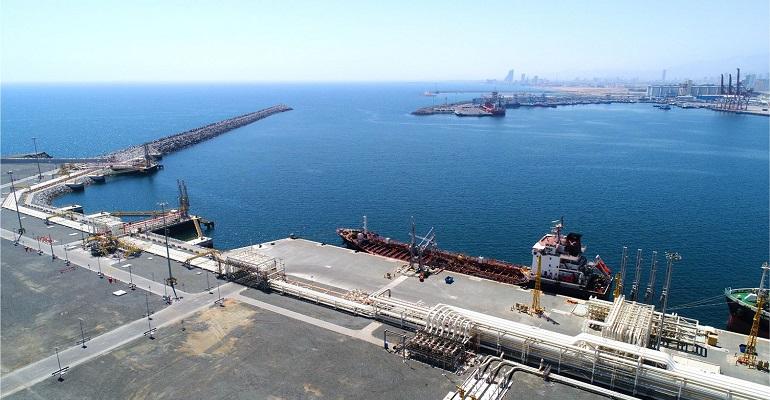Last year, a record 12,500 ships are thought to have called at Fujairah for a wide range of reasons. The port is a haven for ship agency firms and other service providers. Competition is fierce between agents registered with the port, of which there are more than 70. Only a dozen of these, however, appear on the port’s official list.
Others may provide specialist services, such as dive inspections, underwater cleaning, or shoreside engineering specialisms. It is a location, experts say, where virtually any marine service is available. And firms thrive on Anchorage business.
Although the port does not divulge detailed financials, it has been described as a gold mine. As one of the world’s largest oil storage hubs, with a capacity of more than eleven million cubic metres that are understood to be full, its customers and clients include many leading oil traders including names such as Emarat, GTI, GPS Chemoil, Vitol, and Vopak.
Meanwhile, unconfirmed reports indicate that oil storage rates have climbed to record levels since Russia invaded Ukraine. Figures of $12 per cubic metre have been bandied about, but some say more. To put this in context, prevailing oil storage prices in Singapore are around $7.
Prices have climbed recently because much of the crude oil and products exported to Europe has been re-routed to other locations since the beginning of war in Europe. Experts say that record volumes of Russian oil have boosted storage levels in Fujairah. There, it can be blended, re-loaded, or transferred between vessels through ship-to-ship transfers.
Although it is best known for the anchorage, its vast oil storage activities, and the wide range of agency and marine services that are potentially available, the port has a number of other revenue streams. These include the export of aggregates, grain storage and export, and limited volumes of container and cruise business.
Fujairah is also the terminal for the 380-km Abu Dhabi Crude Oil Pipeline (ADCOP) which links Habshan and Fujairah across deserts and mountains, bypassing the Strait of Hormuz. ADCOP pumps about 1.5 million barrels of oil a day, more than half of the UAE’s exports. The pipeline was built partly as a security measure to avoid Gulf transits, partly to reduce congestion, and partly to save the costs of fuel and ship time for the extra nautical miles through Gulf waters.
One major project that appears to have slipped away from Fujairah, however, is the LNG terminal that Abu Dhabi was planning to build and locate in Fujairah. According to recent reports, the state energy firm now plans to site the project in Al Ruwais Industrial City in Abu Dhabi. In a statement, the oil company explained that Al Ruwais was favoured because of its proximity to ADNOC’s existing operations, its future growth projects, and its local supplier base
Copyright © 2024. All rights reserved. Seatrade, a trading name of Informa Markets (UK) Limited.
Add Seatrade Maritime News to your Google News feed.  |

